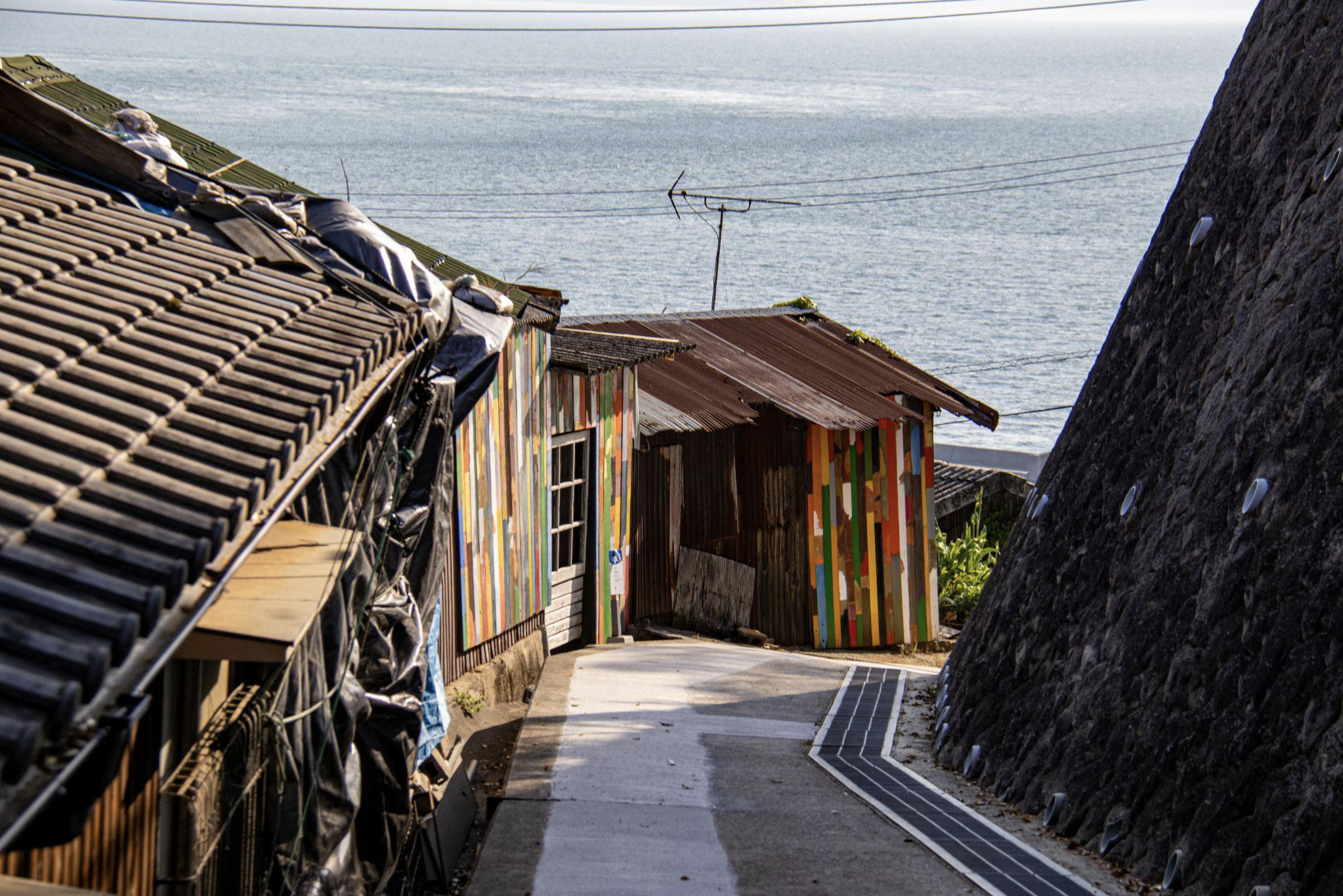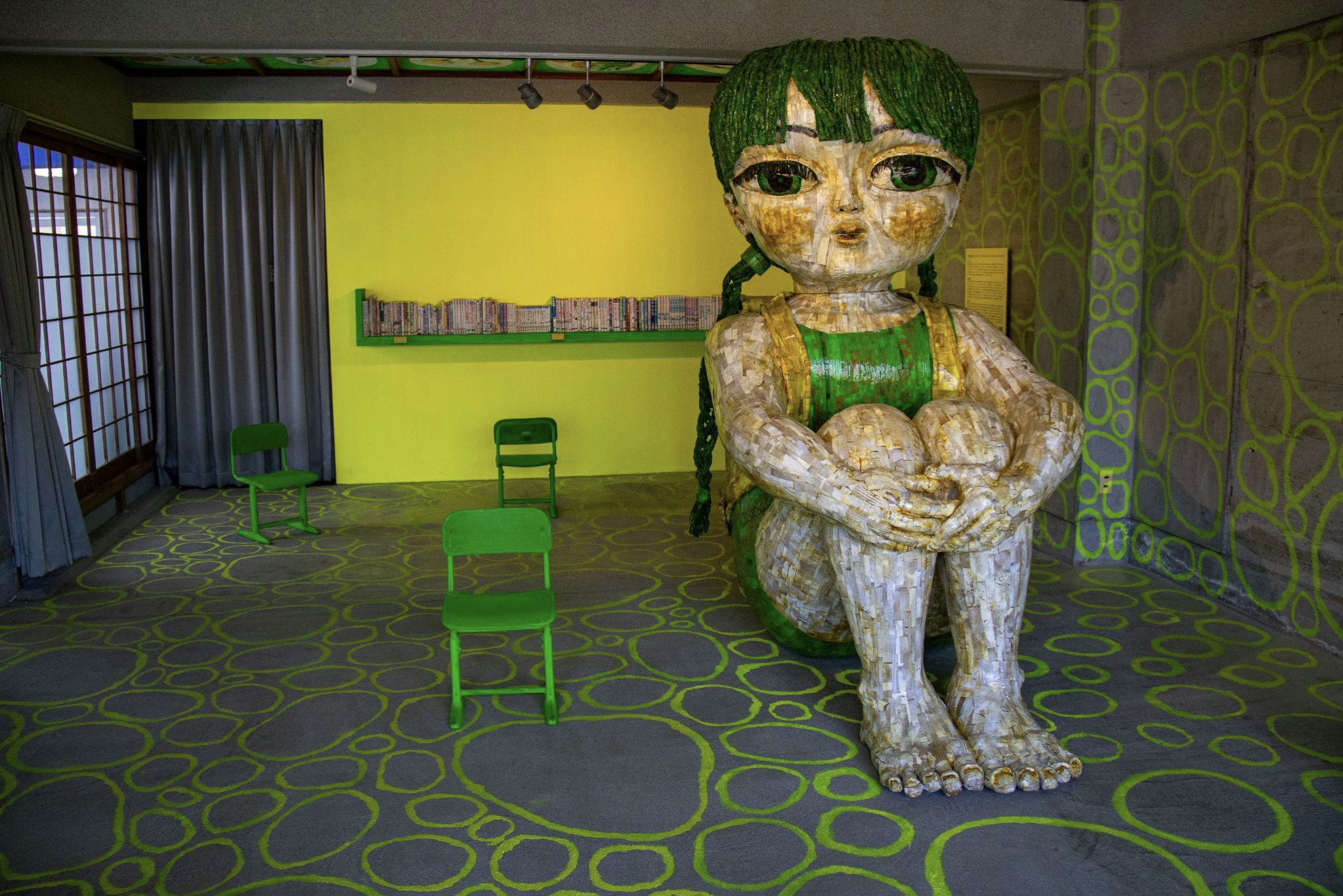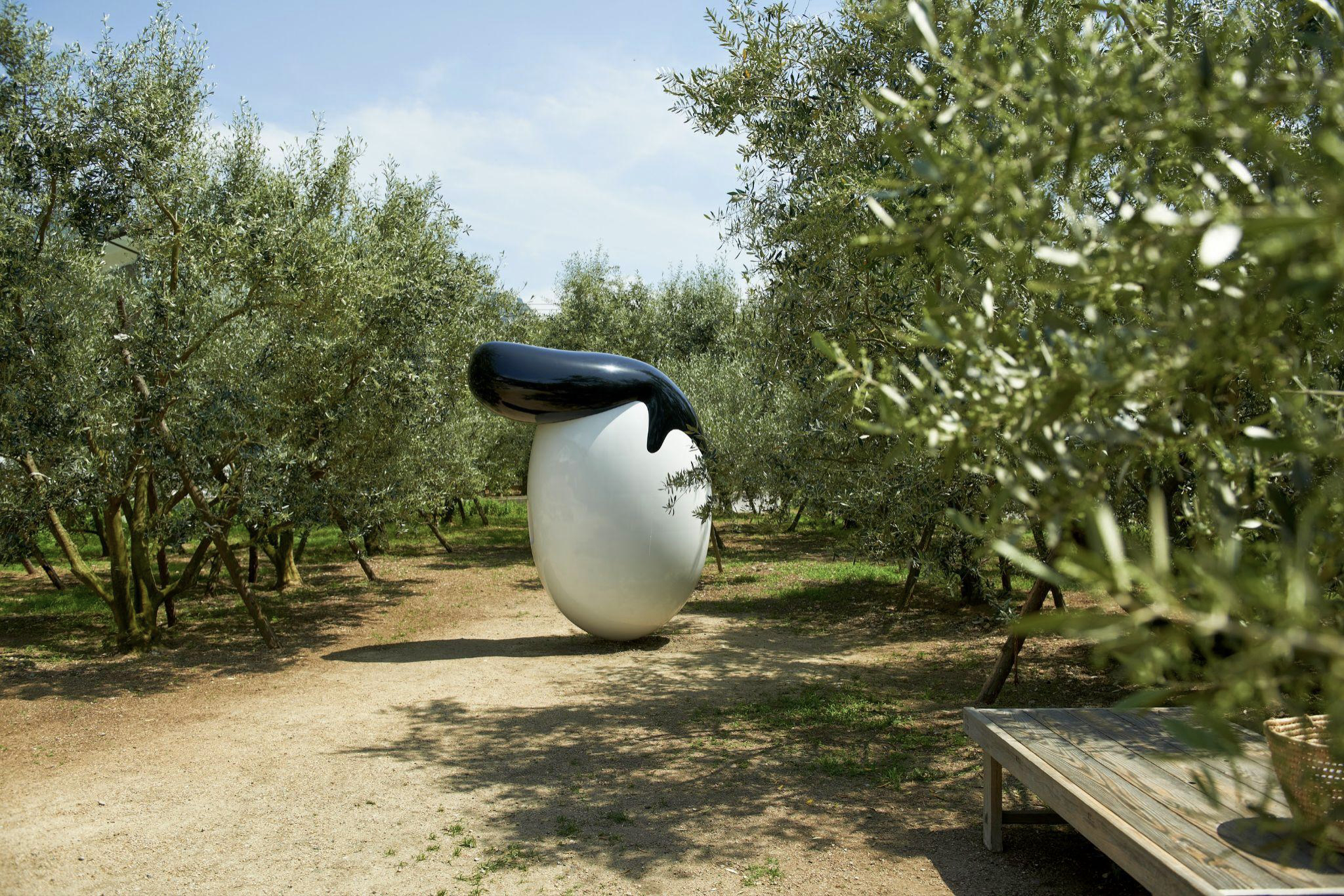SETOUCHI TRIENNALE 2025
In parallel with these new contributions, several veterans of the Setouchi Triennale return with bold reimaginings of their earlier works, creating a dynamic continuity across editions. Christian Boltanski’s haunting legacy on Teshima is honored through a posthumous collaboration, who has reinterpreted his sound-based work Les Archives du Cœur into a new spatial form that allows for interactive listening, with community-submitted heartbeats collected in the years following Boltanski’s passing.

Rikuji Makabe “Project for wall painting in lane, Ogijima”, 2010-, Ogijima, Photo: Sébastien Raineri
Whether through ephemeral installations, architectural interventions, or participatory rituals, the Setouchi Triennale 2025 emphasizes works that respond to the texture of place, physically, emotionally and historically. Artists are asked to engage with the island’s aging populations, marine ecologies, and layered pasts, creating works that function as bridges: between generations, geographies, and sensibilities.
This commitment to slow, embedded practice sets Setouchi apart from many of its global counterparts. Here, the focus is not simply on what the artist brings, but on what the encounter produces, often something delicate, provisional, and transformative. As one island elder said in a pre-opening talk, “We don’t need art that shouts. We need art that listens.”
Over its sixteen-year history, the Setouchi Triennale has become a form of island infrastructure, an evolving model for regional revitalization, social regeneration, and ecological care. With its 2025 edition, the festival continues to redefine what a large-scale international art event can mean in the context of shrinking populations, aging communities, and fragile ecosystems. Here, art is not an interruption but an integration, a process that unfolds over seasons and lifetimes. One of the defining aspects of the Triennale is the active participation of local residents, many of whom serve not only as guides, translators, and craftspeople, but also as co-authors of the artworks themselves. This year, that spirit of partnership deepens through a series of projects designed to blur the line between artist and audience.

The Cabin Company “Mekochan Old School Bookstore”, 2025, Megijima, Photo: Sébastien Raineri
The Koebi-tai (Little Shrimp Squad) volunteers play a pivotal role in bridging artists and residents. Their contributions range from assisting in the creation and maintenance of artworks to organizing local events and guiding visitors through the islands. By engaging in activities such as running community kitchens, participating in festivals, and publishing newsletters that document island life, the Koebi-tai ensure that the Triennale remains deeply rooted in the local context.
In line with its guiding theme, this edition integrates sustainability as a structural priority. This year marks the introduction of the Setouchi Art and Sustainability Charter, a set of concrete commitments aimed at reducing the festival’s carbon footprint and fostering environmental literacy among both artists and audiences. Transport between islands is being reimagined through a new fleet of hybrid-electric ferries. Meanwhile, a digital “green pass” rewards visitors who opt for public transport, bike rentals, or volunteer work, connecting ecological behavior with meaningful access. Exhibition materials are also increasingly sourced locally or recycled from previous editions, and several works are designed to naturally decompose at the close of the festival, leaving no trace behind.

Hisakazu Shimizu “Regent in Olives”, 2013-, Shodoshima, Photo: Kimito Takahashi
Hisakazu Shimizu’s Regent in Olives stands as a whimsical yet profound landmark within Shodoshima’s olive groves, seamlessly blending contemporary art with local culture and community engagement. This sculpture, resembling an oversized olive adorned with a classic Japanese pompadour hairstyle serves not only as an artistic statement but also as a functional, unmanned kiosk offering local fruits and vegetables to visitors.
The artwork’s charm is amplified by the active participation of local farmer Iwao Ishii, who often greets visitors, offers photo opportunities with pompadour wigs, and shares insights into the island’s traditions, including its historic soy sauce industry and olive cultivation. This personal touch transforms the sculpture into a living symbol of Shodoshima’s hospitality and communal spirit. Since its debut in 2013, Regent in Olives has become an iconic fixture of the Setouchi Triennale, embodying the festival’s mission to revitalize island communities through art. Its playful design and interactive nature invite both locals and tourists to engage in a shared cultural experience, making it a beloved emblem of the island’s artistic and communal identity.
Perhaps most importantly, the Triennale has deepened its collaboration with regional sustainability initiatives, including partnerships with marine biologists working on the restoration of seagrass beds, vital ecosystems that support biodiversity in the Seto Inland Sea.
The Setouchi Triennale is often hailed as a model for “art-led revitalization”, but its true success lies in its ability to resist easy replication. What works here is a product of sustained trust, long-term engagement, and a willingness to embrace complexity. The 2025 edition reinforces the idea that art festivals can be seasonal, iterative, and deeply rooted, offering not answers, but new ways of asking questions.
As curator Fram Kitagawa puts it, “The Triennale is not about the next big thing. It’s about the next meaningful thing.” The Setouchi Triennale 2025 offers something precious: a vision of art as careful listening, reciprocal learning, and slow transformation. A sea of hope, indeed.
Setouchi Triennale 2025
Dates: Spring (April 18 – May 25), Summer (August 1 – 31) and Autumn (October 3 – November 9)
Place: Seto Inland Sea
https://setouchi-artfest.jp
Text: Sébastien Raineri
Photos: Sébastien Raineri





